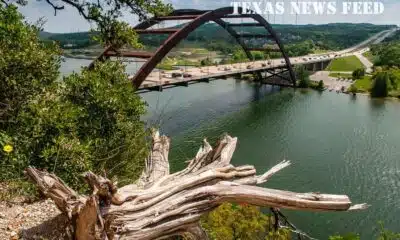News from the South - North Carolina News Feed
Mission Health in Western NC faces renewed scrutiny after Helene
Instrumental in Helene aftermath, Mission Health ‘back to their old ways’
Asheville’s Mission Health has been trying to help the city recover in the aftermath of Tropical Storm Helene. But medical staff and state officials have not softened their stance toward the beleaguered hospital.
New North Carolina Attorney General Jeff Jackson, for one, is not backing down from his office’s lawsuit against the medical provider.
The lawsuit, originally filed in 2023 by predecessor Josh Stein, who is now the governor, accuses parent company HCA Healthcare of reneging on a promise to maintain oncology and emergency services. Stein also claims that the hospital is guilty of understaffing, long wait times and bed shortages.
“I know HCA was hopeful that a new attorney general would drop our office’s lawsuit,” Jackson told Carolina Public Press. “I am the attorney general, and that’s not going to happen.
“HCA broke the promises it made to provide emergency and cancer-care services to the people of Western North Carolina. We’ll keep fighting for this case as long as it takes to restore the health care HCA promised to provide and Western North Carolinians deserve.”
Mission Health’s Helene help
Meanwhile, Mission Health is still trying to recover after Helene left the facility without water for more than two months. Staff, many of whom suffered losses from the storm themselves, worked for days at a time to deal with an influx of storm-related injuries and illnesses.
Pop-up stores were created so they could grab essential supplies.
Stations were set up where they could shower and do laundry.
Gas tanks were filled for free.
By many accounts, Mission Health cared for their employees in the immediate aftermath of the storm.
But that was then.
Now, some hospital staff feel that HCA Healthcare, and Mission Health by extension, has returned to its “old ways.”
“We are right back to cutting corners and making money off of understaffing,” said Kerri Wilson, a Mission Health nurse. “I would say the safety and staffing issues within the hospital are pretty reflective of the way they were in late 2023 when we were placed in ‘immediate jeopardy.’ If surveyors came by over this past weekend, I feel we could go back into ‘immediate jeopardy’ very easily.”
Double ‘jeopardy’
“Immediate Jeopardy” is the most serious citation that the Centers for Medicaid and Medicare can deliver to a hospital. And, like Wilson referenced, that’s what happened in December 2023 when the organization notified HCA Healthcare that Mission Health had been cited for nine instances of patient harm or avoidable deaths in 2022 and 2023.
“The ER is almost full every day, the ICU has been full, so we’ve had patients waiting for extended periods of time,” Wilson explained. “There were reports of nurses having to take care of up to 12 patients each.”
The most common recommendation for nurse-to-patient ratios is one nurse for every four patients.
“There were a few good things that happened after the hurricane,” Wilson continued. “We were able to get gas tanks and things like that during those first, really tough weeks of healing. But as soon as the cameras and the media and FEMA started to leave the area, we saw that a lot of those good things stopped. HCA was putting on a show. It was a lot of PR stunts for them, and that was really disappointing because I gave them the benefit of the doubt.
“They are back to their old ways, and our patients are suffering because of it.”
View from the top
But HCA Healthcare’s top leader holds a different view.
CEO Greg Lowe argues that HCA Healthcare’s status as the largest hospital corporation in the country is what allowed them to serve patients through Helene.
“Because of the support from HCA Healthcare, Mission Hospital and our five acute-care community hospitals were able to remain open to care for our neighbors throughout the storm and its devastating aftermath,” Lowe said in a statement. “Thinking about how we have been able to consistently serve our communities … makes me incredibly grateful to be part of this team. Without HCA Healthcare’s scale and ability to deliver under immense pressure, Mission Health facilities would have been otherwise forced to close.”
Even the hospital’s harshest critics partially agree with that assessment. Julie Mayfield, a Democratic state senator who represents Buncombe County, is one of them. Mayfield heads a coalition of physicians, nurses, elected officials, business leaders, clergy and advocates whose mission is to replace HCA Healthcare as owner of Mission Health with a nonprofit hospital system.
“They really took care of their employees and patients in a way that was kind of surprising to everyone,” Mayfield told CPP. “They would never have been able to do everything they did, as quickly, if they weren’t a major corporation. What the storm showed us, very clearly, is that they have the resources and can make the investments in their patients and employees if it is in their interest.
“But we’re a little bit past that now, and we’re starting to hear some problematic and troubling things from folks on the inside again. They didn’t just wake up and become the company we want them to be.”
Mission Health monopoly
Not only did Stein sue Mission Health for cutting services in Asheville, he’s also been outspoken about what he sees as a health care monopoly in the region.
When a need was found for a hospital in the Buncombe County town of Weaverville, Stein urged North Carolina’s Department of Health Human Services to deny Mission Health’s application.
“Currently, Mission has almost no competition for acute care in Buncombe County. The lack of competition is the result of Mission’s unique history,” he wrote.
The department ultimately awarded the right to build a facility to AdventHealth, a Florida company that operates hospitals in Polk and Henderson counties as well as eight other states.
But the deal isn’t done yet.
On Jan. 13, HCA once again appealed the state’s decision, sending the issue back to court and further delaying the construction of the Weaverville facility.
“We strongly believe Mission Hospital can best meet Western North Carolina’s growing need for complex medical and surgical care,” HCA spokeswoman Nancy Lindell told CPP. “If we had been awarded the beds, Mission Hospital could have had these beds available in the shortest period of time — beds which are desperately needed by our community.”
This article first appeared on Carolina Public Press and is republished here under a Creative Commons license.
News from the South - North Carolina News Feed
White House officials hold prayer vigil for Charlie Kirk
SUMMARY: Republican lawmakers, conservative leaders, and Trump administration officials held a prayer vigil and memorial at the Kennedy Center honoring slain activist Charlie Kirk, founder of Turning Point USA. Kirk was killed in Utah, where memorials continue at Utah Valley University and Turning Point USA’s headquarters. Police say 22-year-old Tyler Robinson turned himself in but has not confessed or cooperated. Robinson’s roommate, his boyfriend who is transitioning, is cooperating with authorities. Investigators are examining messages Robinson allegedly sent on Discord joking about the shooting. Robinson faces charges including aggravated murder, obstruction of justice, and felony firearm discharge.
White House officials and Republican lawmakers gathered at the Kennedy Center at 6 p.m. to hold a prayer vigil in remembrance of conservative activist Charlie Kirk.
https://abc11.com/us-world/
Download: https://abc11.com/apps/
Like us on Facebook: https://www.facebook.com/ABC11/
Instagram: https://www.instagram.com/abc11_wtvd/
Threads: https://www.threads.net/@abc11_wtvd
TIKTOK: https://www.tiktok.com/@abc11_eyewitnessnews
News from the South - North Carolina News Feed
Family, friends hold candlelight vigil in honor of Giovanni Pelletier
SUMMARY: Family and friends held a candlelight vigil in Apex to honor Giovanni Pelletier, a Fuquay Varina High School graduate whose body was found last month in a Florida retention pond. Giovanni went missing while visiting family, after reportedly acting erratically and leaving his cousins’ car. Loved ones remembered his infectious smile, laughter, and loyal friendship, expressing how deeply he impacted their lives. His mother shared the family’s ongoing grief and search for answers as authorities continue investigating his death. Despite the sadness, the community’s support has provided comfort. A celebration of life mass is planned in Apex to further commemorate Giovanni’s memory.
“It’s good to know how loved someone is in their community.”
More: https://abc11.com/post/giovanni-pelletier-family-friends-hold-candlelight-vigil-honor-wake-teen-found-dead-florida/17811995/
Download: https://abc11.com/apps/
Like us on Facebook: https://www.facebook.com/ABC11/
Instagram: https://www.instagram.com/abc11_wtvd/
Threads: https://www.threads.net/@abc11_wtvd
TIKTOK: https://www.tiktok.com/@abc11_eyewitnessnews
News from the South - North Carolina News Feed
NC Courage wins 2-1 against Angel City FC
SUMMARY: The North Carolina Courage defeated Angel City FC 2-1 in Cary, ending their unbeaten streak. Monaca scored early at the 6th minute, followed by Bull City native Brianna Pinto’s goal at the 18th minute, securing a 2-0 halftime lead. Angel City intensified in the second half, scoring in the 88th minute, but the Courage held firm defensively to claim victory. Pinto expressed pride in the win, emphasizing the team’s unity and playoff ambitions. Nearly 8,000 fans attended. Coverage continues tonight at 11, alongside college football updates, including the Tar Heels vs. Richmond game live from Chapel Hill.
Saturday’s win was crucial for the Courage as the regular season starts to wind down.
https://abc11.com/post/north-carolina-courage-wins-2-1-angel-city-fc/17810234/
Download: https://abc11.com/apps/
Like us on Facebook: https://www.facebook.com/ABC11/
Instagram: https://www.instagram.com/abc11_wtvd/
Threads: https://www.threads.net/@abc11_wtvd
TIKTOK: https://www.tiktok.com/@abc11_eyewitnessnews
-
News from the South - West Virginia News Feed7 days ago
Protesters in D.C. flood the streets demanding an end to Trump’s military deployment
-
News from the South - Alabama News Feed6 days ago
Alabama lawmaker revives bill to allow chaplains in public schools
-
News from the South - Missouri News Feed7 days ago
1587 Prime gives first look at food, cocktail menu ahead of grand opening in KC
-
News from the South - Arkansas News Feed7 days ago
‘One Pill Can Kill’ program aims to reduce opioid drug overdose
-
Mississippi News Video7 days ago
Interview: Come see Baptist at WTVA Senior Health Fair
-
News from the South - Arkansas News Feed6 days ago
Arkansas’s morning headlines | Sept. 9, 2025
-
News from the South - Texas News Feed6 days ago
‘Resilience and hope’ in Galveston: 125 years after greatest storm in US history | Texas
-
News from the South - Missouri News Feed6 days ago
Pulaski County town faces scrutiny after fatal overdose












































